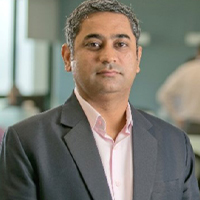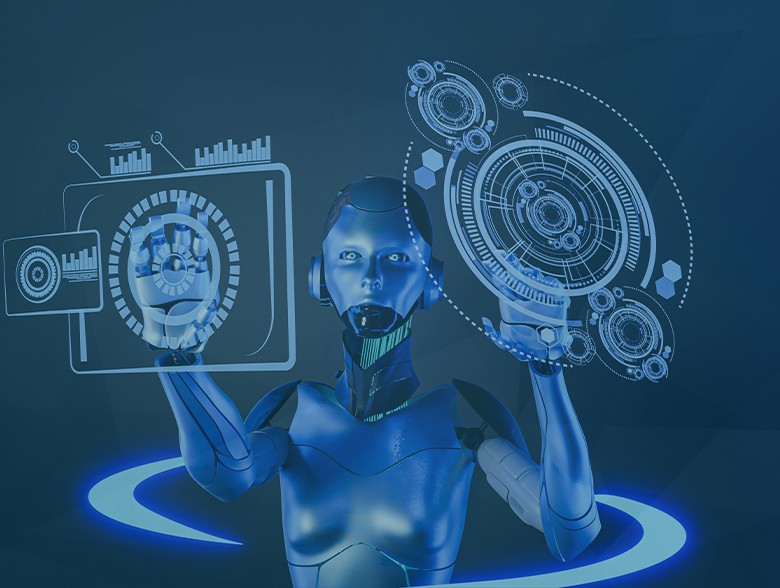By Amit Dhingra, Executive Vice President of Network Services, NTT
During the past three years, the enterprise cybersecurity environment has changed drastically. Security threats now come from any number of vectors. Basically, everywhere.
Many employees are still working from home part of the time, opening up potential vulnerabilities in security, and at the same time, many companies have moved data and workloads to the cloud. In addition, some organizations have added more devices, such as IoT sensors, opening up more access points to their networks, and this is all in addition to the run-of-the-mill cyberthreats focused on data held on premises.
As organizations emerge from the pandemic and continue along their digital transformation journeys, IT professionals are struggling with the challenges of securing such hybrid organizations. Every new device added to the network, be it an employee home laptop, an IoT sensor, a machine vision camera, or a cloud-based server, brings a new security threat to the company.
All of these changes are making network security a critical defense measure, and at the same time, they require higher levels of access control.
Security trends affecting network modernization
We see many successful organizations focusing on network security, as part of overall network modernization efforts. Network modernization can mean many things, including replacing hardware, adopting, software-defined networking solutions, and setting up private 5G networks. But a big piece of most network modernization is baking security in at the core to better protect the network.
NTT’s Global Network Report, a recent survey that looks at how networks are evolving, how organizations’ preparedness for these changes is advancing, and how they will adapt their networks to new demands, found that 87% of top-performing organizations are investing in their cybersecurity capabilities, compared with just 41% of underperformers. A key focus for these organizations is moving from perimeter-based security to identity-based security.
The survey had several other interesting results. Related to network transformation:
- 93% believe new threats will drive increased security demands, requiring a deeper level of access control and inspection;
- 86% expect private 5G as an extension to the LAN;
- 95% are investing in cybersecurity capabilities;
- 92% expect to adopt cloud-first solutions or move network functions to the cloud;
- 89% expect that their wider campuses will be a critical element that will enable hybrid working.
Meanwhile, the survey found that technology trends are driving change:
- Over 95% of executives confirm they will be investing in modernizing their network;
- 70% are struggling to keep pace with business demands for increased speed and innovation, citing technical debt and a lack of expertise.
Turning to AIOps
As they look to better manage their networks, senior executives have identified real-time analytics as their most critical need, followed by the ability of network managers to drill down fast and efficiently to deal with problems while reducing downtime.
IT teams often struggle to keep pace with the growing number of endpoints and the cybersecurity threats they present. These challenges point to a need to deploy AIOps and automation.
The value of real-time analytics and the ability to focus in on issues that require immediate attention cannot be understated. Without a real-time look at the networks, organizations are flying blind, and serious problems can go undetected for days or even weeks.
Going back to the recent survey, nearly nine in 10 CIOs and CTOs agree that they need AIOps, automation and improved analytics to optimize their network operations. However, there’s a problem: While 91% of organizations agree that predictive analytics is critical to operational insight and a proactive approach, 85% say a lack of visibility across their network architectures currently restricts their operational insight and causes reactive firefighting.
Automated solutions are necessary to not only prevent this reactive firefighting, but to mitigate risk and address threats before organizations suffer a significant impact.
Modernizing your network with a trusted partner
In addition to automation, another big piece of the network modernization puzzle is the right partner. Many organizations struggle to find the right partner with the right capabilities, especially because vendor capabilities and rigidity are cited by companies as a top challenge in attaining network success, apart from budget constraints.
Vendors need to be agile: Building the client network to be agile is the key to adding emerging technologies or swapping technologies that best meet the organization’s challenges.
In addition, organizations undergoing network transformation should remember that network security has increased in importance as a major network architecture component. Vendors offering top-notch security services, or partnering with leading security providers, should be near the top of the list.
To transform a network into an agile, scalable framework that offers greater support for IoT connectivity, increased visibility and control, remote management, and automation, organizations should:
- Get the right hardware in place as a solid foundation;
- Implement a comprehensive software layer on top because this is a fast-growing area rich in innovation;
- Add an operations layer, including analytics, automation and AIOps, to ensure speed and agility.
It’s valuable to work with an experienced managed service partner that offers a range of networking services and partners with other top providers. For example, NTT recently announced that it has added Palo Alto Networks Prisma SASE to its Managed Campus Networks portfolio.
It’s critical that organizations select managed network service providers that align with key organization targets. Choosing the right partner with the right goals ensures that organizations remain competitive in business environment where competitors are constantly searching for innovation.
Embracing the new network
The networking environment is changing, and smart organizations are embracing the new network. The widespread adoption of hybrid-work and post-pandemic digital transformation are key security considerations driving network modernization in 2023 and beyond.
Even the most stubborn of organizations are realizing they need AIOps, automation and analytics as the number of endpoints and ways to manage them are transforming quite drastically. It’s becoming critical to use analytics and act on it in an automated manner.
At the same time, even the most stubborn of organizations are realizing that growing security threats demand automated solutions like AIOps to provide real-time intelligence needed to protect organizations.
Organizations will be tested as new target vectors emerge alongside rapid growth in networks and connected devices. Network modernization, with better security as a core goal, can help organizations meet these challenges and grow for the future.
About the Author
 Amit Dhingra is the Executive Vice President of Network Services at NTT. Amit has over 25 years of experience in telecom and hi-tech sector. He is an accomplished leader with extensive experience across global technology markets. Amit has a proven leadership track record for developing strategic business choices, growing business in telecom environment and successfully turning around businesses to profitability. He is an electronics and communication engineer, and he has an MBA degree from London Business School, majoring strategy and finance. Prior to NTT, Amit worked with Tech Mahindra (a leading systems integrator), where he led Network Services business globally. Amit has also spent more than 15 years at Nokia where he was recognized as part of Nokia top 100 leaders.
Amit Dhingra is the Executive Vice President of Network Services at NTT. Amit has over 25 years of experience in telecom and hi-tech sector. He is an accomplished leader with extensive experience across global technology markets. Amit has a proven leadership track record for developing strategic business choices, growing business in telecom environment and successfully turning around businesses to profitability. He is an electronics and communication engineer, and he has an MBA degree from London Business School, majoring strategy and finance. Prior to NTT, Amit worked with Tech Mahindra (a leading systems integrator), where he led Network Services business globally. Amit has also spent more than 15 years at Nokia where he was recognized as part of Nokia top 100 leaders.
Amit Dhingra can be reached online at LinkedIn and at our company website https://www.global.ntt/


